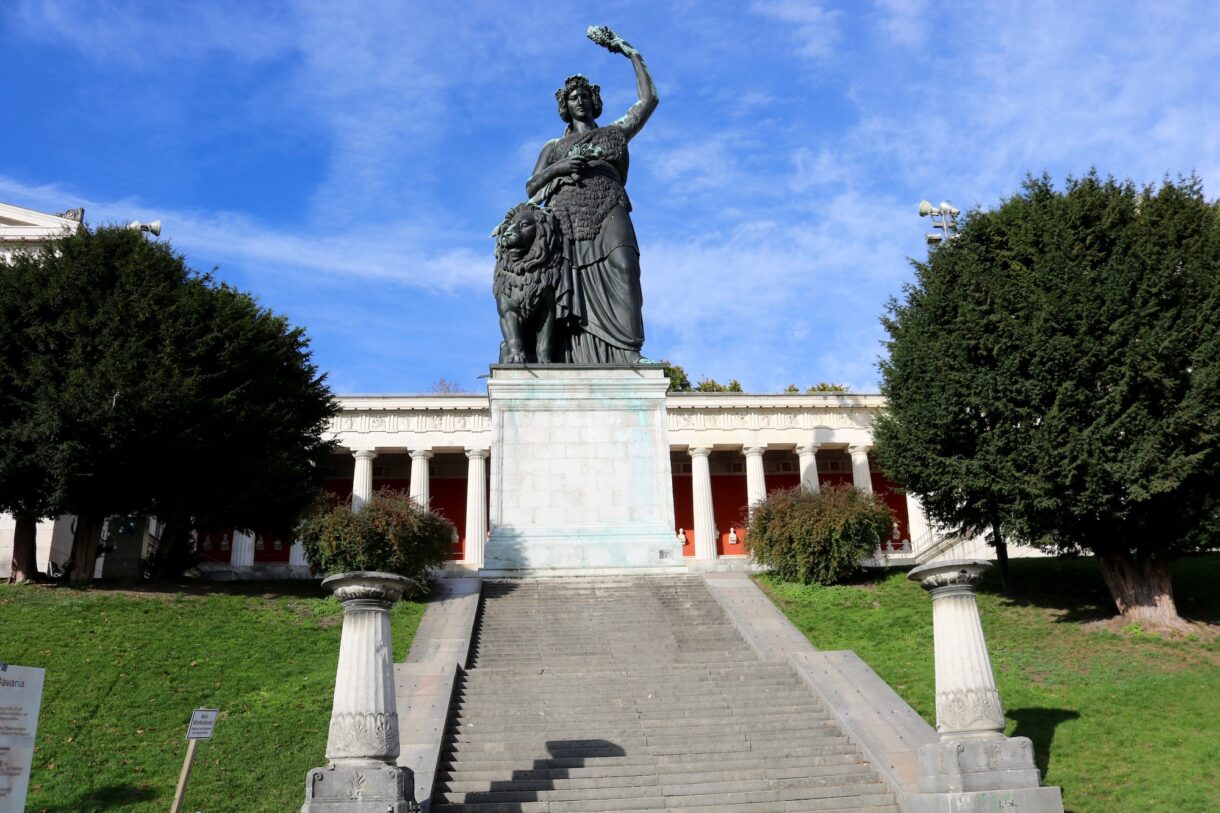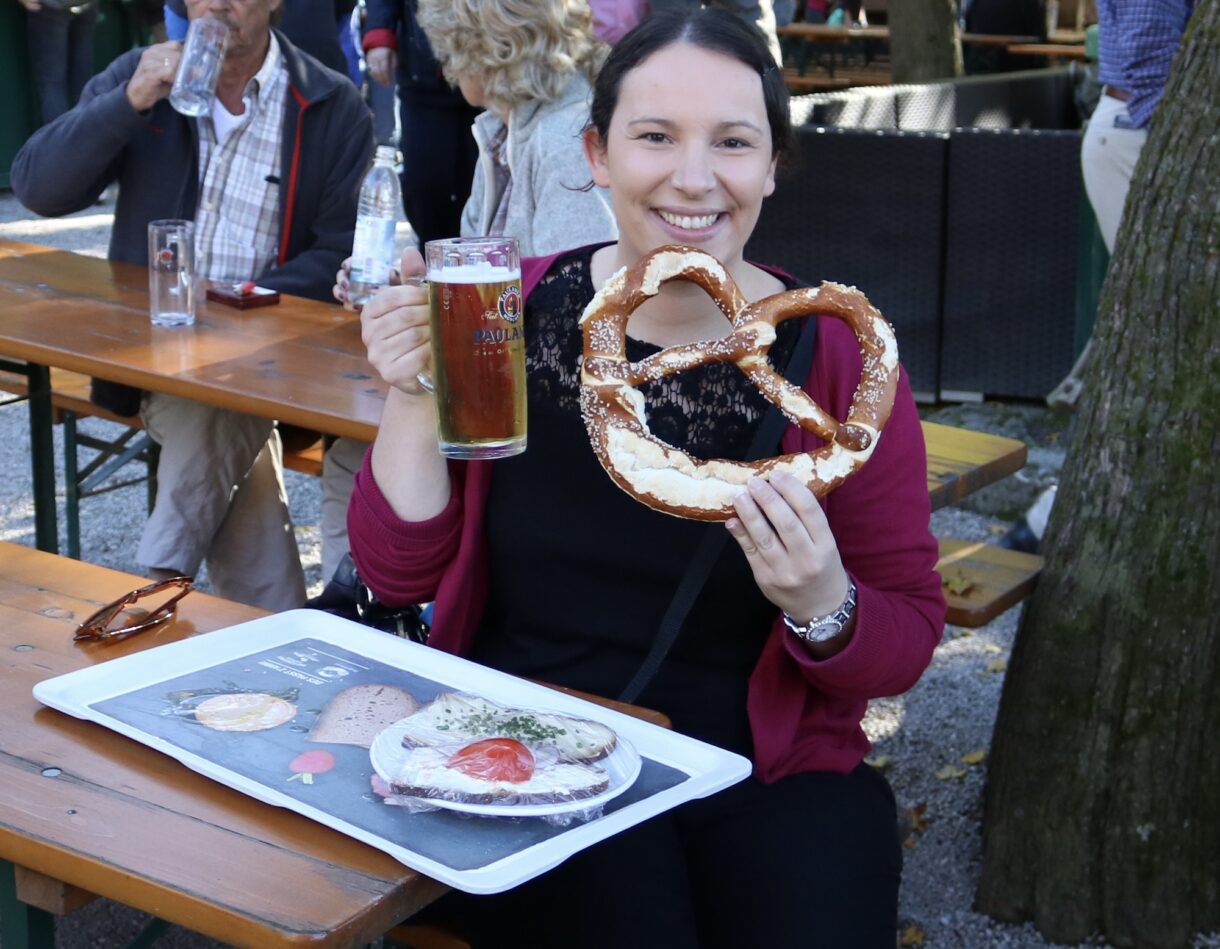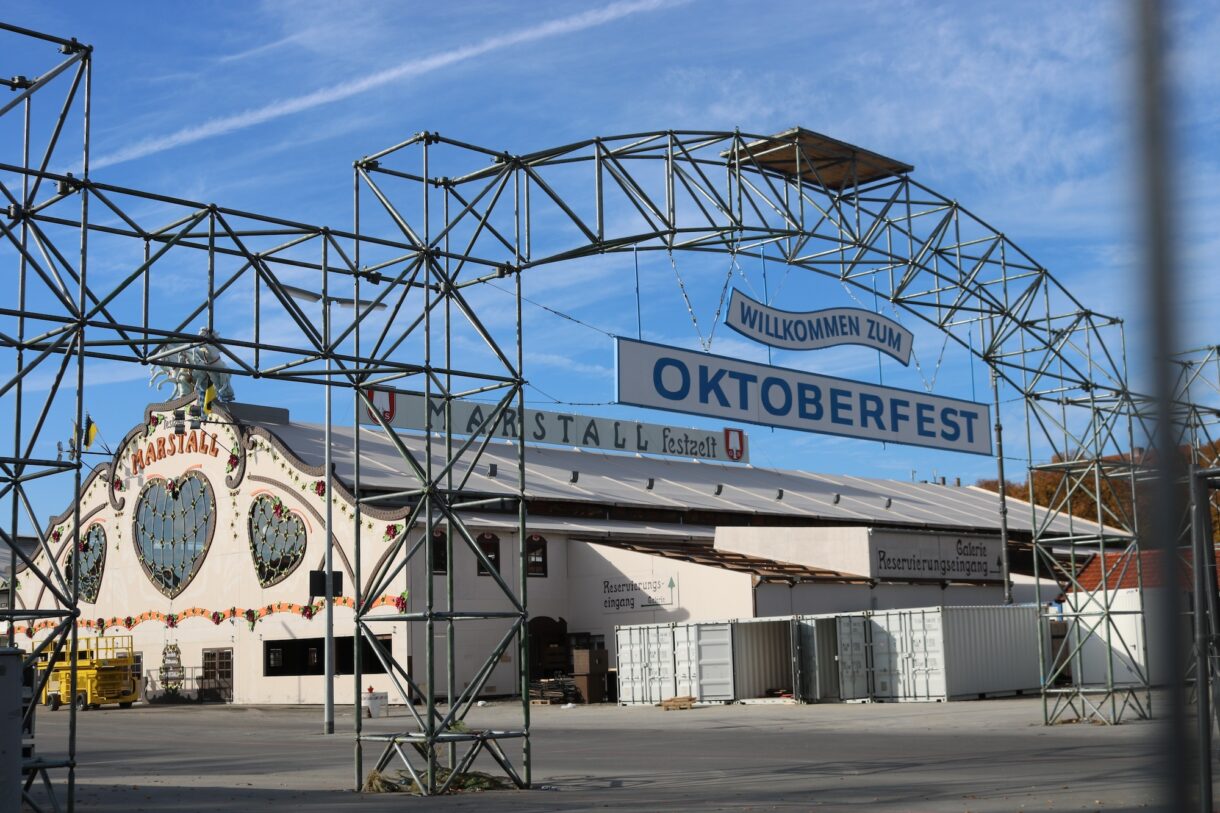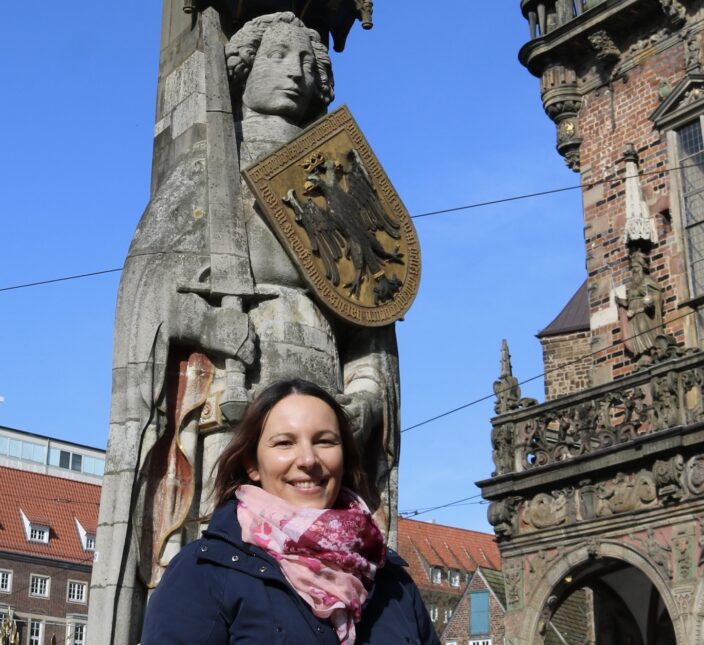Planning a trip to Germany to trace your German roots is an adventure that touches the heart. And adding a visit to the world-famous original Oktoberfest in Munich makes it even more special. If Oktoberfest has been on your bucket list for years, don’t skip this handy guide for everything you need to know before you visit this now world-famous Bavarian folk festival.
Disclosure: This blog post includes affiliate links to GetYourGuide.com. If you click on any of these links and make a booking through this link, I will receive a small affiliate fee.
What is Oktoberfest?
The Oktoberfest in Munich is a world-famous beer festival that takes place every year in Munich, the capital city of the federal state of Bavaria in southern Germany.
Bavaria in southern Germany is the largest of the 16 federal states in terms of surface area. However, it’s important to note that Bavaria’s unique traditions, which include wearing Dirndl or Lederhosen, are regional Bavarian traditions and do NOT represent German traditions as a whole.
The festival thus reflects the local culture and spirit of Bavaria, which makes it a celebration of Bavarian heritage rather than a national German event.
I always like to compare Bavaria to Texas in the USA, where many locals also speak with a southern accent, like to wear cowboy hats and cowboy boots and have a blast at rodeos. But that’s not usually the case in the rest of the United States, is it? 😉

Back to the Oktoberfest in Munich: Over the years, this fun celebration was not only copied in cities and countries around the world, but the original Oktoberfest in Munich has grown into the world’s largest folk festival.
During a 16- to 18-day extravaganza each year, there is plenty of beer, food, and fun rides at the fairground – attracting millions of visitors from all over the globe.

A short history of the Oktoberfest in Munich
Contrary to what you might think, the Oktoberfest tradition in Germany isn’t actually that old.
The first Oktoberfest in Germany was held in Munich in October 1810. Back then, the festival was part of the wedding festivities for Crown Prince Ludwig of Bavaria (1786-1868) and Princess Therese of Saxe-Hildburghausen (1792-1854).
To celebrate their marriage, a horse race took place on a field. This field was later named “Theresienwiese” in honor of Princess Therese. The whole population of Munich was invited to celebrate the wedding, which later would become the world-famous original Oktoberfest.

Where does the Oktoberfest in Munich take place?
Today, the event still takes place at the Theresienwiese (or simply “Wiesn” in the local dialect).
Here at the Oktoberfest grounds, you will also find the “Bavaria” statue – a 18 meters high female bronze figure.
For more info on the Bavaria statue and other fun things to do in Munich, check out my guide for 10 things to do in Munich.

10 Things to know before visiting the Oktoberfest in Munich:
1. Oktoberfest in Munich dates 2026
While the name might suggest otherwise, Oktoberfest doesn’t actually take place in October. At least for the most part. It usually starts in mid-September to make the most of Munich’s friendlier early fall weather. But it does usually run into the first few days of October.
In 2026, the original Oktoberfest runs from September 19 to October 4, 2026.
So, if you’re planning to visit your ancestral towns in Germany before or after, make sure you plan around these dates. It’s a great way to finish or kick-start your heritage journey with a fun festival.

2. “O’zapft is!”
The “O’zapft is!” event marks the official start of the Oktoberfest in Munich each year and takes place on the festival’s opening day.
Traditionally, the current mayor of Munich shouts “O’zapft is!” after successfully driving a tap into the first keg of beer.
The phrase “O’zapft is!” comes from the Bavarian dialect, where “zapfen” means “to tap” (as in tapping a keg of beer). So it translates to “It’s tapped!” in English.

3. Beer tents at Oktoberfest
There are around 14 large beer tents and 20 smaller ones at the Oktoberfest in Munich. Each tent represents one of Munich’s six main breweries – Augustiner, Hacker-Pschorr, Hofbräu, Löwenbräu, Paulaner, and Spaten. Each brewery’s beer is slightly different, so make it a point to sample from various tents if you can.
The “Hofbräu-Festzelt” is a favorite among international visitors and known for its lively atmosphere, while tents like “Schützen-Festhalle” and “Ochsenbraterei” focus on traditional Bavarian food like roasted ox or suckling pig.

If you are looking for the best beer at Oktoberfest Munich, be sure to try the “Oktoberfest” beer. This strong, malty beer has an alcohol content of around 6 %, and it’s made only for this time of year.
Don’t like the strong or bitter beer taste? Then try a so-called “Radler” (a beer and lemonade mix) or head to the “Weinzelt” tent for wine.
But if you are all-in for beer, don’t forget to order a “Maß” – the one-liter beer mugs that make Oktoberfest famous. Prost!

4. Do I need tickets or reservations for the Oktoberfest in Munich?
The best part of Oktoberfest Munich is that entry to the festival grounds and the tents is free! However, if you want a seat in one of the more popular tents, particularly in the evenings, making a reservation is essential. Seats can fill up quickly, especially during weekends.
You can reserve a table directly through the tent’s website (many offer English versions for international guests).
Pro Tip: Through the activity tour provider GetYourGuide, you can get an all-inclusive entry package for the Oktoberfest in Munich, which includes meals, drinks and a reserved table. 🍻

5. Oktoberfest dress code
Although you don’t have to of course, wearing the traditional Bavarian (not German!) clothing items “Lederhosen” (leather pants) for men or a “Dirndl” (dress) for women is a fun way to connect with Bavarian culture. At the Oktoberfest in Munich, you’ll see many locals and tourists alike dressed for the occasion.
If you’re opting for a “Dirndl”, there’s a small but meaningful detail you should know: the placement of your bow indicates your relationship status! Tie it on the right if you’re taken, on the left if you’re single, and in the center if you’re still undecided.
The best place to buy Lederhosen and Dirndl is in Munich itself. So if you can, arrive a few days prior to your visit to Oktoberfest to get your hands on an original Bavarian outfit. You will find numerous places in Munich that offer these iconic garments.
Pro Tip: Don’t plan to buy a Bavarian Dirndl or Lederhosen in northern Germany. You won’t find it there! 😀

Did you know?
Originally, only the nobility wore “Lederhosen” (leather pants) when hunting. Farmers couldn’t afford them. They were also unsuitable for working in the fields. It wasn’t until 1883, when there was renewed regional pride, that a few “Stammtischfreunde” (friends who meet regularly at a local pub) founded Bavaria’s first “Trachtenverein” (traditional dress association).
The tradition of wearing Dirndls in Bavaria began in the 19th century, when they were worn by peasant women as practical clothing for daily work on farms and in rural households. The simple, sturdy dresses were ideal for hard labor, but over time, they evolved into more decorative attire, especially for special occasions.
It wasn’t until the 1950s, however, that Lederhosen and Dirndl dresses became a popular fashion statement at the Oktoberfest in Munich, as Bavarians embraced their regional heritage and identity again.

6. Traditional Oktoberfest food
While your ancestry trip might have you enjoying your German great-grandmother’s favorite regional dishes, Oktoberfest gives you a chance to try the Bavarian classics.
Think hearty plates like roasted chicken (Hendl), pretzels (Brezn) as big as your face, Würstl (sausages), and Schweinshaxe (pork knuckle). There’s also the famous Oxen spit in the “Ochsenbraterei” tent and smoked fish at “Fischer-Vroni”.
As you see, there is something for everyone. And I am sure even for the vegetarians like me. 😉 When I was in Bavaria, I loved the “Rahmschwammerl” with mushrooms together with a freshly baked Brezn (pretzel) and a hearty potato salad just like my grandma had made them.

Photo: Envato Elements
7. Finding the perfect Oktoberfest hotel in Munich
Munich’s hotels fill up quickly during Oktoberfest, so book early to secure a room. Staying near the Theresienwiese, where the festival takes place, is convenient, but it can also be pricey.
If you’re looking for something more affordable, consider accommodations in the surrounding neighborhoods like Schwabing or Haidhausen, which offer excellent public transport connections to the festival.
On my most recent visit to Munich, I stayed in the “Gambino Hotel CINCINNATI” in Obergiesing. The hotel is called that way because it’s close to the Cincinnatistraße (Cincinnati street) in Munich.
This street, in turn, has been named this way because Cincinnati in the USA is a partner city of Munich. There is a S-Bahn stop right next to the hotel, which conveniently takes you into the city center in just 10 minutes.

8. How to get to the Oktoberfest in Munich
While we are on the topic: Munich is incredibly well-connected with public transport, making it easy to get to the Oktoberfest grounds at Theresienwiese. The U-Bahn (subway) is your best bet—lines U4 and U5 take you right to the festival’s doorstep.
You can also take the tram or S-Bahn. Just follow the crowds of revelers in Dirndls and Lederhosen, and you’ll know you’re headed in the right direction. 😀

9. Weather in Munich in September
Packing for the Oktoberfest Munich can be tricky, as Munich’s September weather can be unpredictable. You can usually expect daytime temperatures in the 60s to low 70s (°F) though, but be prepared for cooler evenings.
A light jacket or sweater is always a good idea, especially if you plan to enjoy the outdoor beer gardens.

10. Don’t miss! Oktoberfest in Munich parades and events
Oktoberfest isn’t just about beer – it’s also a cultural showcase with plenty of events to enjoy. The “Costume and Riflemen’s Parade” is a must-see, featuring thousands of participants in traditional Bavarian attire, along with riflemen, musicians, and decorated floats.
There’s also the “Family Day”, perfect if you’re traveling with kids, offering discounted rides and games.

Did you know?
The so-called “Freimarkt” fun fair in Bremen (the city where I live and work as a guide) also has an Oktoberfest tent. The Freimarkt takes place about a month later than the Oktoberfest in Munich, usually from mid-October to the beginning of November for 3 weeks.
It’s also the only time during the year when you will see people wearing Lederhosen and Dirndl in Bremen, northern Germany as they are heading to the “Oktoberfest” tent on the Freimarkt. 😀

More Munich Tips
Looking to explore Munich beyond the Oktoberfest? Then check out my guide for the 10 Top Things to Do in Munich, Germany for Ancestry-Inspired Travelers.

This wraps up my guide of the 10 things you need to know before visiting the Oktoberfest in Munich, southern Germany.
So, the only question that remains now: When will you throw on your Dirndl or Lederhosen and celebrate Bavarian-style at the original Oktoberfest in Munich?
Unless otherwise credited, all photos by © Sonja Irani | MyAncestorsJourney.com

$0 Germany Trip Planning MINI GUIDE

Are you planning an ancestry-inspired trip to Germany, but don’t know how to start?
Start with something fun! 😉
In the $0 Germany Trip Planning MINI GUIDE PDF, you will get instant access to the 18 most popular ancestry-inspired activity ideas.
Plus, a Germany overview and worksheet for your ancestor.
Download NowAll you need is your email address:
You will immediately receive your 14-page PDF via email.

